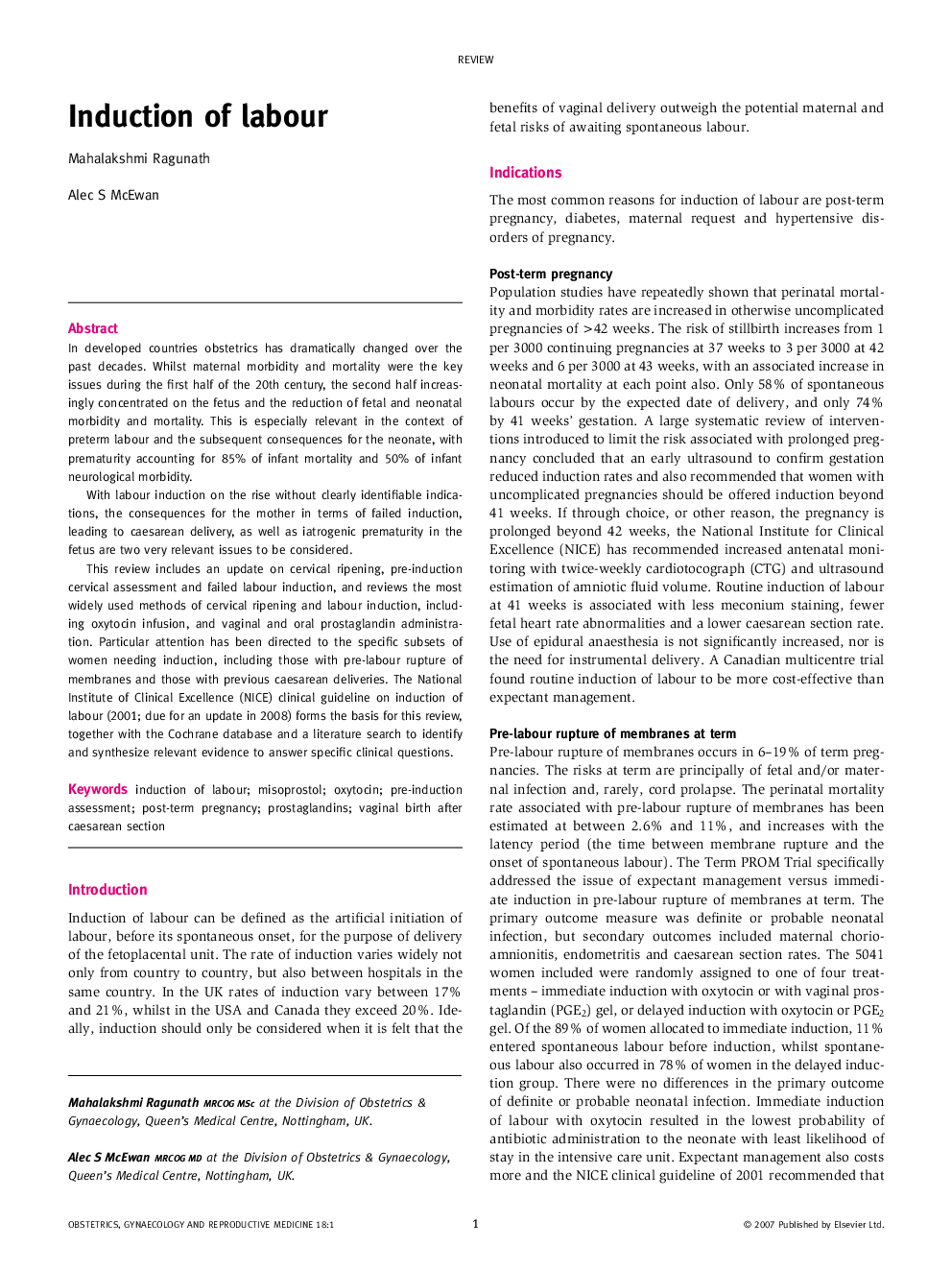| کد مقاله | کد نشریه | سال انتشار | مقاله انگلیسی | نسخه تمام متن |
|---|---|---|---|---|
| 3967526 | 1256274 | 2008 | 6 صفحه PDF | دانلود رایگان |

In developed countries obstetrics has dramatically changed over the past decades. Whilst maternal morbidity and mortality were the key issues during the first half of the 20th century, the second half increasingly concentrated on the fetus and the reduction of fetal and neonatal morbidity and mortality. This is especially relevant in the context of preterm labour and the subsequent consequences for the neonate, with prematurity accounting for 85% of infant mortality and 50% of infant neurological morbidity.With labour induction on the rise without clearly identifiable indications, the consequences for the mother in terms of failed induction, leading to caesarean delivery, as well as iatrogenic prematurity in the fetus are two very relevant issues to be considered.This review includes an update on cervical ripening, pre-induction cervical assessment and failed labour induction, and reviews the most widely used methods of cervical ripening and labour induction, including oxytocin infusion, and vaginal and oral prostaglandin administration. Particular attention has been directed to the specific subsets of women needing induction, including those with pre-labour rupture of membranes and those with previous caesarean deliveries. The National Institute of Clinical Excellence (NICE) clinical guideline on induction of labour (2001; due for an update in 2008) forms the basis for this review, together with the Cochrane database and a literature search to identify and synthesize relevant evidence to answer specific clinical questions.
Journal: Obstetrics, Gynaecology & Reproductive Medicine - Volume 18, Issue 1, January 2008, Pages 1–6